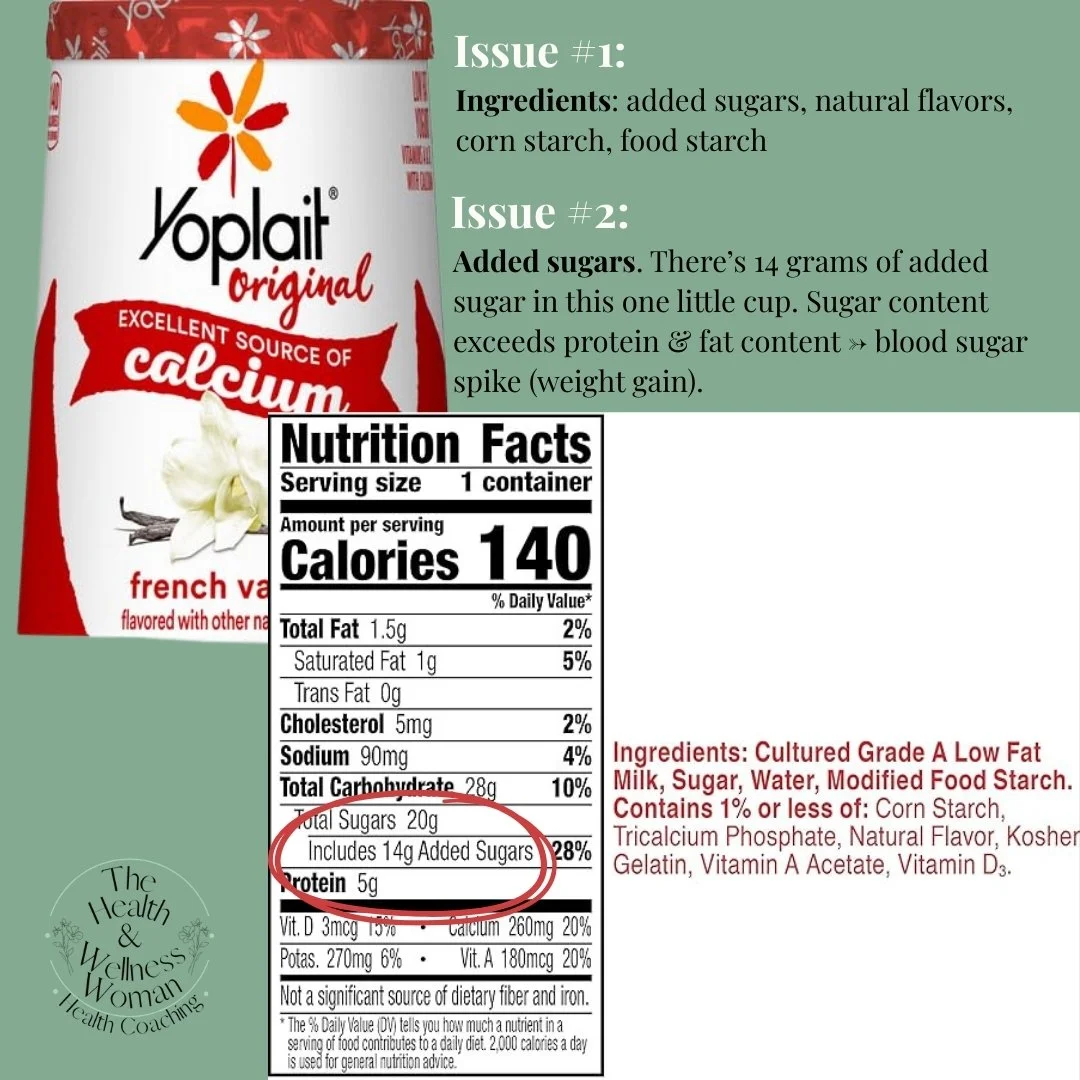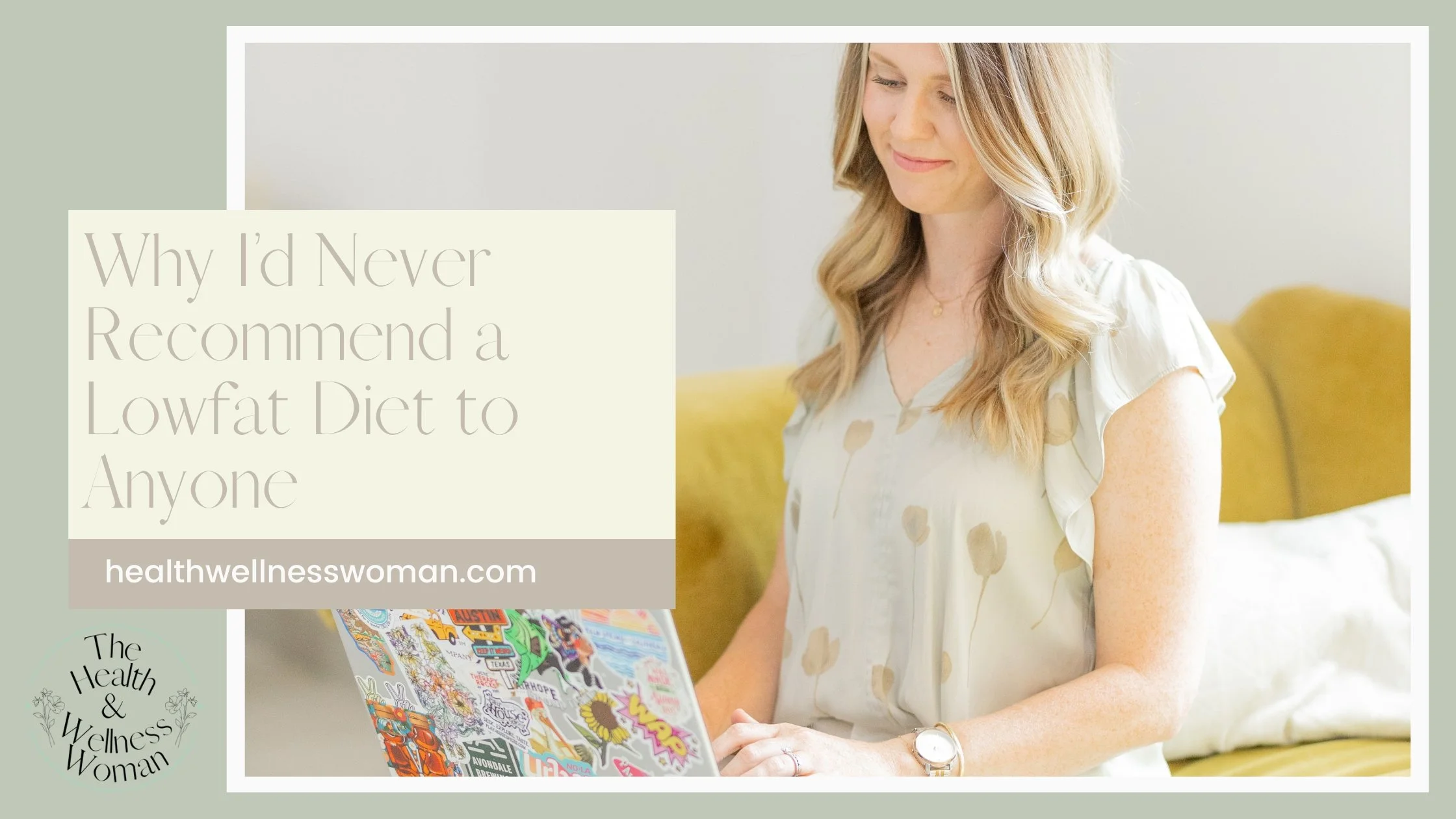Why Nonfat Foods Aren’t as Healthy as You Think
For as long as I can remember, we were told that “fat will make you fat”. And then we saw grocery store shelves fill up with nonfat or low-fat everything- yogurts, salad dressings, cookies, crackers, and the list goes on. For pretty much everyone, choosing the nonfat option felt like a healthier choice.
But here’s the deal: nonfat does not mean healthy. In fact, in many cases, it can actually be much worse for your health than the full fat version of whatever you’re eating. In this blog post I will talk about what’s wrong with “nonfat”, what happens when they remove fat from our food, what it does to your blood sugar, and how to choose better options. Let’s hop in to it!
*Nothing in this post is meant to substitute medical advice. This post may contain affiliate links. This means I may earn a commission, at no extra cost to you, if you make a purchase using these links. I only recommend products I love and trust. To see our full disclosure, click here.
What Happens When Fat is Removed
Let’s use lowfat yogurt as our example:
If you’ve had full fat yogurt, you know that it is very creamy and naturally satisfying. If they remove the fat, it becomes thin and bland. So, companies add stuff like starches and sugars (check out the graphic below) to fix the taste. Some nonfat yogurts have more sugar than cookies!
The same thing happens with salad dressings, nut butters, baked goods and snack foods.
The bottom line: nonfat normally means more sugar and more additives.
Your Body Actually Needs Healthy Fats
Let me be clear: dietary fat is not the enemy. Here’s some ways it is essential to our health:
Hormone production- including reproductive hormones
Brain health- our brains are literally 60% fat
Nutrient absorption- vitamins such as A, D, E and K are all fat-soluble
Satiety- it keeps you full and reduces cravings
If you’re eating nonfat, then you’re missing out on these health benefits- and you’re actually more likely to crave sugar soon after.
Nonfat Foods and Blood Sugar Spikes
Fat is an important component for blood sugar balance. When fat is removed and replaced with sugar or refined carbs, your blood sugar will spike quickly. After it spikes, it’ll then crash. That is when you’ll feel:
Tired
Irritable
“Hangry”
Over time, these repeated spikes and crashes can affect your hormone balance, energy levels and weight regulation. If you’re hoping to lose weight from eating nonfat- it’s counterintuitive. You won’t do it. Take the example of the yogurt I used above as to why. And if you want to learn to balance your blood sugar, check out my course linked below!
How to Choose Better Options
Instead of automatically grabbing the nonfat version, try this:
Read the label- check for added sugars or starches or stabilizers
If you’re new to label reading, check out my [guide on how to easily read food labels here]
Choose full-fat from healthy sources- think things like avocado, olive oil, coconut, nuts, seeds, grass-fed dairy
Pair carbs with fat and protein- this slows digestion and keeps blood sugar stable
If you’re wanting to stabilize blood sugar to help lose weight, check out my blog post on how to do it
If you’re wanting a quick crash course on blood sugar stabilization, my blood sugar balancing for dummies course is now $40. It’s short, simple and easy to implement!
Avoid “diet” or “light” marketing traps- if a label says these words, it’s a signal to actually AVOID that food item. They often contain higher sugar content or toxic additives!
The Key Takeaway
Nonfat actually does NOT mean healthy. Our bodies are made to thrive on real, whole foods. When you learn to balance fat, protein and carbs in your meals, you’ll notice better energy, fewer cravings, and more satisfaction after eating.
If you want to dive deeper into how to eat for balanced blood sugar and steady energy and potential weight loss- check out my Blood Sugar Balance Course. It’s just $40 and gives you a simple, sustainable way to eat for long-term health. No calorie counting or cutting out entire food groups.






Struggling with energy crashes, cravings, or blood sugar issues? Learn how to balance blood sugar naturally through diet, lifestyle, and simple daily habits. Includes tips, real-life examples, and a course to help you take action.